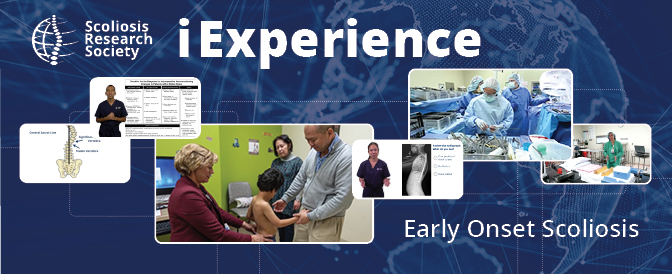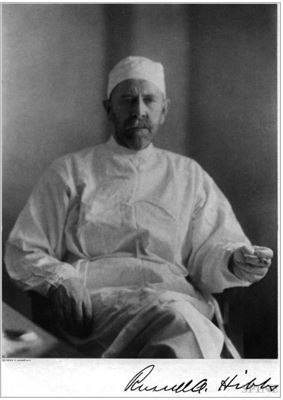
Christopher I. Shaffrey, MD
SRS President
Dear SRS Members,
As we close out 2021, I would like to thank each and every one of you for your dedication to our great Society. So many of you give your time and energy to continue moving us forward, we truly could not do it without you. Looking ahead to 2022 we have many things to be excited about.
Read more »
President's Message
Awards and Scholarship Committee
Annual Meeting | Call for Abstracts
Education Resource Committee
Fellowship Committee
IMAST Registration Open
Global Education on Spine Deformity Committee
Historian Corner
Morbidity and Mortality Committee
Non-Operative Committee
Podcast Committee
Scoliosis Dialogues: An SRS Podcast
iExperience
Research Grant Committee
Research Program and Oversight Committee
In Memorium
Follow SRS Online
Read more »

Nicholas Fletcher
Chair
The Awards and Scholarship Committee is looking forward to our opportunity to evaluate applications for a variety of awards this coming spring.
Read more »

Read more »
Education Resource Committee

Ron El-Hawary
Chair
The Education Resource Committee (ERC) is coming off a very productive 2020-21 year and is now revamping our efforts for 2022! Currently, all content from the SRS E-Text has been revised by SRS members and is in the process of being uploaded into the 10 core curriculum domains on the ERC website.
Read more »

Matthew E. Oetgen
Chair
I am happy to assume the role of Fellowship Committee Chair this year. I would like to extend a warm thank you to Jeffrey Coe for his tremendous work last year in this position as well as SRS Membership Manager, Alysha Chapman. The fellowship application process, application requirements, and review process have undergone large-scale improvements over the past few years helping the Society streamline and update our policies and procedures around this vital process for membership. Read more.
Read more »

Read more »

Saumyajit Basu, MD,
GESD Chair
The GESD Committee recently completed a successful return to an in-person Hands-On Course in Nijmegen, Netherlands in October, chaired by Ahmet Alanay and Marinus de Kleuver; a virtual Worldwide Course session with the Egyptian Spine Association in November; as well as its first-ever virtual Current Concepts in Spine Deformity course, chaired by Ahmet Alanay and Kota Watanabe and programmed by the CCSD Subcommittee, which ends in December. Read more.
Read more »

Jay Shapiro
Historical Committee Chair
This year marks the 110th anniversary of Dr Russell Hibbs’s performing his first surgical fusion for spinal deformity. On January 9th ,1911 Dr Hibbs performed a T12-L3 fusion under general anesthesia for Pott’s disease in a nine-year-old male.
Read more »

G. Ying Li
Chair
The M&M committee has been working on a report of the 2013-2020 M&M data. The manuscript is being finalized and will be submitted to Spine Deformity in the next couple of months. We have also reviewed, approved, and delivered data for three Requests for Proposals (RFP) for M&M data research submitted by SRS members.
Read more »

Kei Watanabe
Committee Member
On November 7, eight panelists represented the SRS Non-Operative Committee and the Society on Scoliosis Orthopaedic and Rehabilitation Treatment (SOSORT) on a webinar that was an update on the value of bracing in both adult and adolescent scoliosis patients. The webinar was very well attended with more than 500 viewers logged in at one point and over 700 total registered. Watch the replay now.
Read more »

Jaysson Brooks
Chair
During the SRS Annual Meeting in September 2021, the Podcast Task Force was moved to Committee status and I have the privilege of being its first Chair. I would first like to thank Ron El-Hawary for his leadership and mentorship as Chair of the previous Task Force. Ron organized us into a team that has grown tremendously to include an amazing group of podcast co-hosts.
Read more »

Read more »

Read more »
Research Grant Committee

Mitsuru Yagi, MD, PhD.
Committee Chair
The research grant committee received nine letter of interests for the newly created SRS directed research grant from Europe, North America, and Asian countries. The scope of SRS directed research is the long-term outcomes of operative and/or non-operative treatment of adolescent idiopathic scoliosis followed into adulthood.
Read more »



Carol Wise
RPOC Chair
Ever wonder what research is supported by the Scoliosis Research Society, and what we have learned from it? The Research Program and Oversight Committee, or “RPOC”, is charged with answering these questions and with raising awareness of the “return on investment” of SRS-funded research.
Read more »
|

Frank McManus, FRCSI,
1942-2020
|

Marr P. Mullen, MD
1929 – 2020
|

Robert J. Weierman MD
1942-2021
|
Read more »

Read more »





